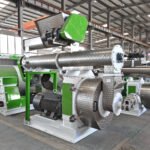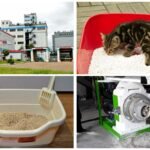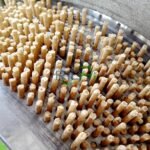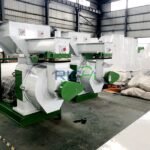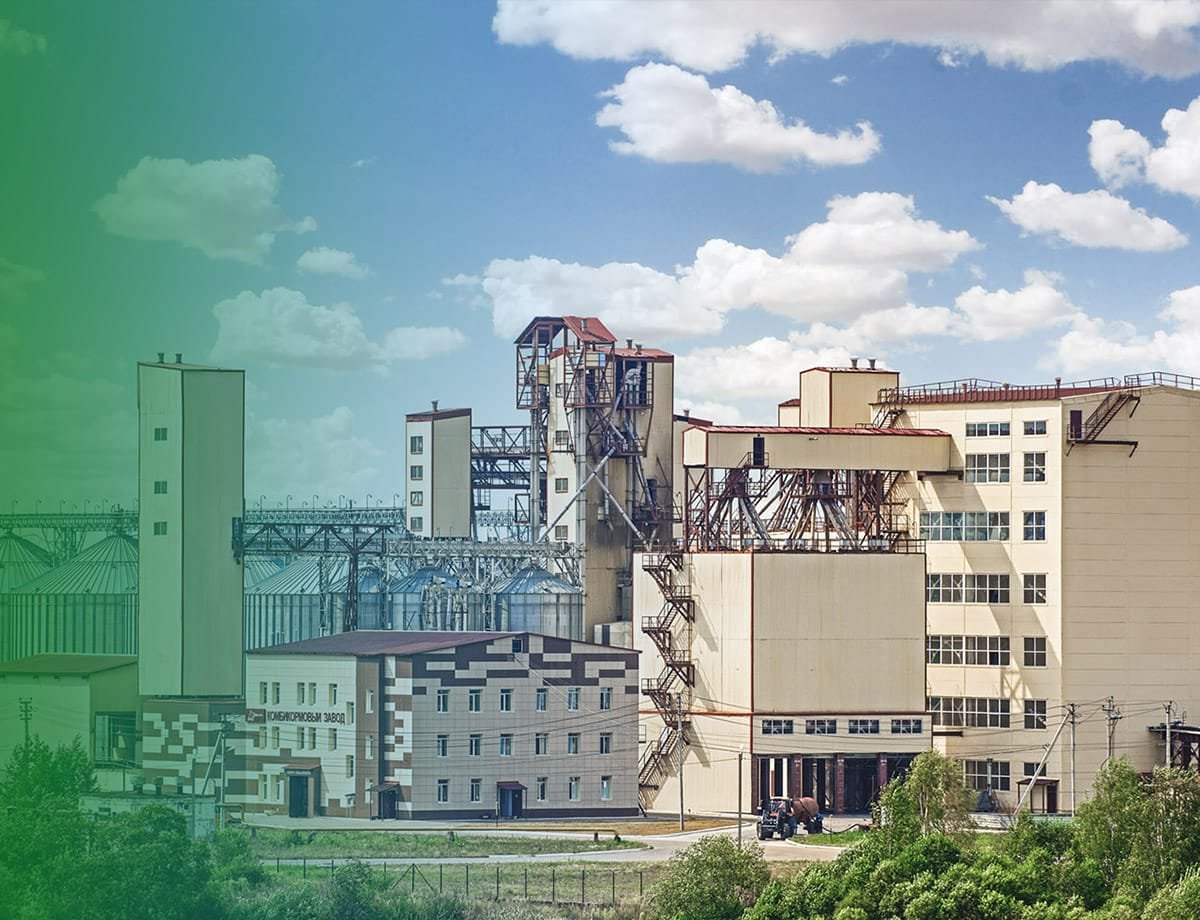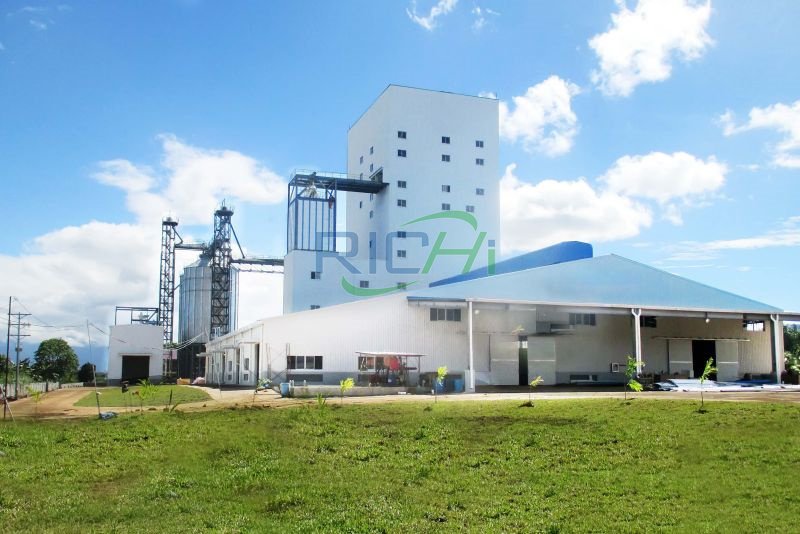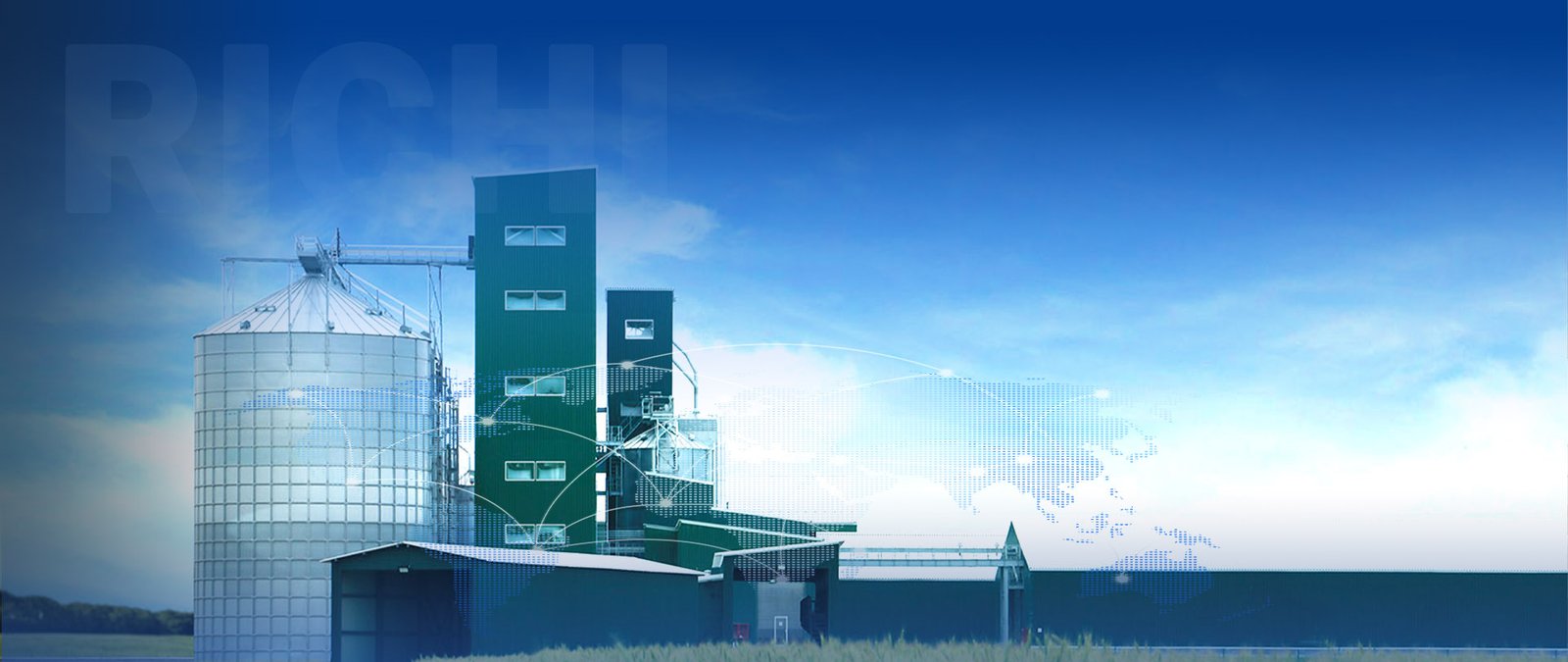While not the most glamorous subject associated with horse ownership, manure management is a very important and inevitable part of responsible horse ownership. Manure is considered a valuable resource by many farmers for its nutrient values and soil amending characteristics. This fact sheet addresses characteristics of horse manure as well as techniques for handling, storing, composting and utilizing horse manure.
Characteristics and production
For calculation purposes, the average 1,000 pound horse eats roughly 2% of its body weight and drinks 10 to 12 gallons of water each day. This will vary with individual metabolism, activity level and the weather. On average, that same 1,000 pound horse will excrete 50 pounds of manure (feces and urine combined) each day, which adds up to 9 tons annually. In fresh manure, there is roughly 0.28 pounds of nitrogen, 0.05 pounds of phosphorus and 0.19 pounds of potassium.
Storage
Typically, manure storage consists of: short-term stockpiling, permanent stockpiling, composting or spreading the manure. Stockpiling is a pile of solid manure that is left undisturbed and may or may not be added to. Stockpiling can occur on a temporary or permanent site. A temporary stockpile must be removed and utilized within one year of the pile’s creation.
The site is then re-vegetated and the pile is started in a new location. This approach prevents nutrient overloading in the soil. In addition to the above listed requirements, site selection is important as there are additional requirements for soil type and separation from groundwater.
A permanent stockpile is located on the same site year after year and is placed on an impervious surface such as concrete or asphalt. There are existing state guidelines for stockpiling manure that should be researched prior to establishing or constructing a manure stockpile.

There are many types of manure storage facility designs that meet a barn’s needs and regulatory guidelines. The type of storage facility most appropriate for a barn will vary by the number of horses, manure end use and available equipment. For barns with less than 15 horses (or where horses are in a pasture a majority of the time) a limited about of manure will be produced. In this case, small, temporary bins or wire continuous bins work well. They are relatively compact and inexpensive to install.
For barns housing 15 or more horses, manure volume increases substantially. Facility design and construction costs can be significant, but can save labor and costs in the long term. The principles are similar to smaller facilities, but access to larger equipment, sturdier designs and impervious footings are critical . Prior to beginning construction, contact your local county feedlot officer or MPCA feedlot contact to determine other regulatory requirements.
The Soil and Water Conservation District (SWCD) or USDA Natural Resources Conservation Service (NRCS) in your county may assist you with designing and building a storage site or facility that meets your needs. (Please note that individual SWCD and NRCS offices have specific criteria required for offering technical assistance.)
Design considerations for a permanent storage unit
- Design unit for 6 months (or more) of storage.
- Ensure the front is wide enough for easy equipment access.
- Include bucking walls for equipment to push against for easier collection.
- Prevent surface water, spring melt and storm water from running into the pile.
- Consider a cover, roof or tarp to prevent excess moisture from building up.
- Use a durable floor material.
- Place in a convenient location from the barn.
An additional option for handling manure is a dumpster service. Due to the cost of rental and hauling, this option is more practical for operations that spend significant amounts of time each day on manure handling. The benefit of a dumpster is convenience. The manure is loaded into the dumpster and is switched when full. The convenience must be weighed against the extra expense of the dumpster.
Composting
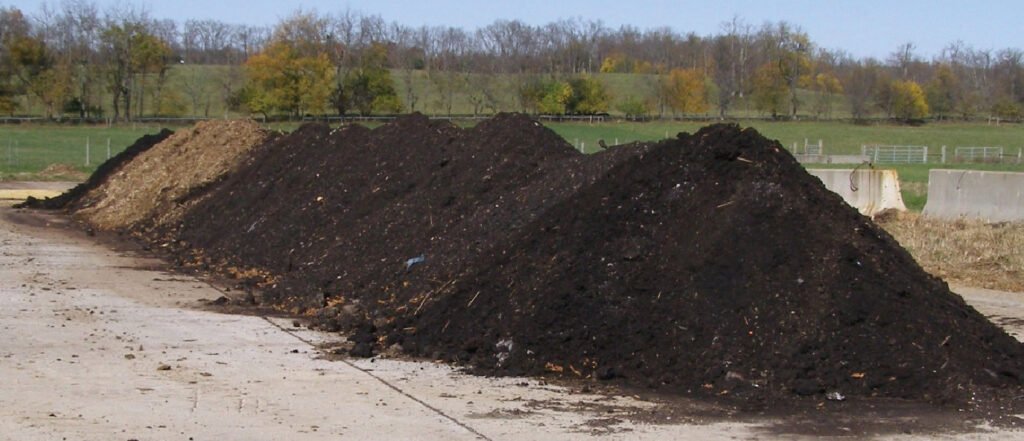
Composting is managed, accelerated decomposition of organic materials by microbes (i.e. bacteria, fungus and molds). The goal of the composting process is to provide these microbes with an optimum environment that encourages manure decomposition quickly and efficiently.
Effective composting locks in nutrients, speeds up the decomposition process, reduces the size of the pile, and kills weed seeds and fly larvae. However, if left on its own, a manure pile will eventually decompose, but nutrients will be lost, and unwanted organisms may infest the remaining compost.
Composting guidelines
Start with a good compost site. Create the site on a convenient location; ensure the site will not be flooded with water, and that the location meets the manure stockpile site requirements . The larger the pile, the easier it is to keep the composting process going. The storage area does not need walls, but walls do help contain the compost and allow air movement.
One can be creative building walls. Pallets, chicken wire, straw bales, and boards with spaces between are options. Static piles that are not turned can be used if air is allowed in through perforated pipes. This can be passive or forced with blowers. Design guidelines for larger manure storage sites can often be used for smaller compost bins as well.
Get compost ingredients. Table 1 has a list of ingredients needed in horse manure compost piles. Table 2 lists materials that can and cannot be composted. Use plant materials like wood shavings, leaves, etc. Pet waste, fats, and meats are not recommended.

Table 1. Common compost ingredients
| Carbon | wood shavings, straw, sawdust, manure |
| Nitrogen | urine, manure, fresh plant material (lawn clippings, freshly pulled weeds), ammonium sulfate |
| Air | 2/3 of the pile volume should be air. Large woodchips can be used to fluff. Sift when done. |
| Water | moisture like a wrung out sponge, wet but not dripping |
| Mix Well | Microbes have better access to materials with more evenly mixed materials. |
Table 2. Can I compost this? Materials that should and should not be used in compost for disease control.
| Useful | Not Useful |
|---|---|
| Manure | Diseased plants** |
| Garden waste | Animal mortalities*** |
| Some kitchen waste* | Dog or cat feces*** |
| Lawn clippings | Fats*** |
| Leaves | Meat*** |
* Vegetables, fruit, coffee grounds, unbleached coffee filters, tea bags, eggshells, bread, etc.
** Many fungi and spores are not killed in the composting process. Adding them can spread the disease further.
*** Experienced composters can compost these, but appropriate temperatures MUST be reached.
Blend compost materials well. Mixing the compost gives the microbes access to all necessary nutrients. Add water as the materials are mixed to reach a moisture level similar to a wrung out sponge. Add water during the mixing process as it is difficult to add water throughout the pile after the compost is mixed.
Cook. Monitor temperatures and remix the pile as needed. The mixture is correct if the pile heats to between 140° and 160° F and sustains that temperature for 3 weeks. A temperature probe, which can be purchased from many farm supply stores, is ideal for monitoring the temperature. Turn the pile if temperatures exceed 160° F or when temperatures begin to decline.
A lower temperate is usually an indication of missing ingredients; often more nitrogen or water is needed. Remix after adding the needed ingredients. The composting process is nearly complete when it does not heat after mixing and the original ingredients are no longer recognizable. Note that it may not be possible to maintain desired temperatures during winter months in Minnesota. Manure can be stockpiled over winter and composting can resume in the spring.
Let cool. Compost curing occurs in the last 1 to 2 months, during which time the temperature will reduce to ambient levels. Depending on the size of materials used, the finished product will look like something between potting soil and large, dark brown wood chips. Finer materials do compost more quickly.
Use. Use the finished compost as a soil amendment in a garden; tree mulch; potting soil; or fertilizer for the yard, pasture or hay fields. When spreading compost on a yard, pasture or hay field, never spread more than 1/2″ of compost at one time.
Utilization options
Whether composted or not, eventually manure will need to be moved and utilized. There are two main options for manure utilization. Manure can be used on site by spreading it as a fertilizer on an open area, pasture or field.
Alternately, manure can be hauled off site for either fertilizer use or composting. Caution should be used when spreading manure on pastures that are grazed by horses. Manure should not be spread on pastures where the stocking rate exceeds 1 horse per 2 acres. Spreading manure in heavily stocked pastures could result in increased parasite exposure.
Spreading
Spreading the manure for its fertilizer value is an excellent way to utilize it. However, caution must be used so excessive nutrient accumulation is avoided. There are three steps to determine how much manure can be spread on a particular field. First, determine the nutrient content of the manure. Several private labs can perform this test. Second, test the soil where the manure will be spread to determine how much manure is needed by a particular crop. Spread only as much manure as needed to produce a viable and maximum yielding crop.
Develop a manure management plan
All horse facilities should have a manure management plan (regardless of size). The plan should include the following:
- Estimation of annual animal manure production
- Estimation of annual nutrient production
- Plans for collecting, handling and storing
- Emergency action plan that quickly deals with accidental manure spills or other environmental emergencies
- If the manure will be land applied, include the following in addition to the above:
- Estimation of annual crop nutrient utilization potential
- Cropping rotation
- Land available for application throughout the year



